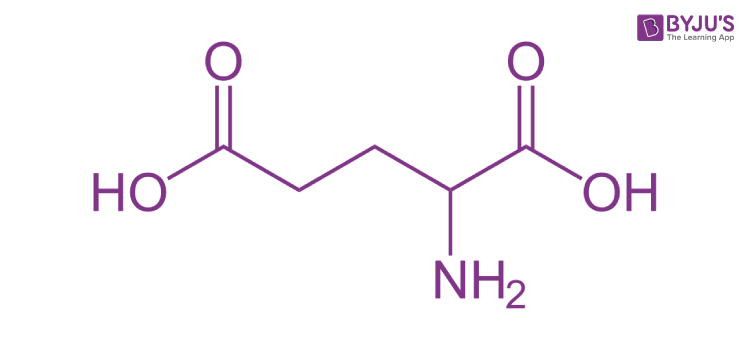Introduction
Glutamic Acid is comprised of amino group, aliphatic amino acid, α-carboxylic acid and side chain carboxylic acid. It plays a vital role in neural activation. It is one of the 20 amino acids.

There are two types of amino acids, essential amino acids, and non-essential amino acids. Glutamic acid is a non-essential amino acid that forms proteins. The chemical formula of Glutamic acid is C5H9O4N.
Uses and Functions of Glutamic Acid
Metabolism: It plays a vital role in cellular metabolism. In the human body, dietary proteins are broken down into amino acids by digestion. Transamination is one of the key processes in amino acid degradation. Glutamate also plays a vital role in the disposal of excess nitrogen in the human body.
Glutamate + H2O + NADP+ → α-ketoglutarate + NADPH + NH3 + H+
Functioning of Brain: It acts as an energy source for the brain for high functioning and stimulates mental readiness. Lack of amino acid can lead to attention deficit disorder. Glutamic acid is recommended by medical practitioners as it helps with behavioral problems and helps in creating an improved learning environment.
Functioning of Heart: Monosodium glutamate is a form of a glutamic acid that helps in improving the functions of the heart beat. It also helps to decrease chest pain associated with coronary heart disease.
Prostate Health: Glutamic acid aids the normal functioning of the prostate. Naturally, the prostate consists of a high concentration of glutamic acid.
Immune System Support and Detoxification: Glutamic acid is necessary for the removal of toxic metabolic wastes products produced by the human body. Mainly, it is essential for detoxifying ammonia which is done by conversion of glutamic acid into glutamine.
Sources of Glutamic Acid
- The prime source of the glutamic acid includes food products with high proteins namely egg, dairy products, fish, meat, and poultry. These amino acids are also used as an additive to add certain flavors to the products.
- Vegetable Sources of glutamic acid include cabbage, beets, spinach, parsley, kale, wheat, and wheatgrass.
- All the legumes and beans are very rich in the proteins and contain a significant amount of glutamic acids.

Comments